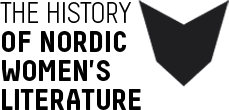Approaching her forties, Thekla Knös published some poems that essentially conform to a cheerful, pious, and snug – homey – idealism. By her contemporaries she was regarded as a typical exponent of everyday culture. The contemporary literary critics commended Knös’s poems and saw in her lyric poetry a confirmation of the thesis that the ‘historical period of art’ had ended. This did not mean that the poem, or poetry, had had its day, but that it had been given a new function, namely to embellish everyday life.Accordingly, the field of poetry was opened up to the female poet as well. Her interest in children is striking. Not only does she write about children, she also writes for children, and her career as a female author is thus typical of the period. Unfortunately she vanished to the place where so many creative and frustrated women formerly ended their lives, the asylum.
Tag: Poetry
No woman and no deity in the Middle Ages attracted the poets like the Virgin Mary, mother of Christ. Marian poetry was initially written in the international language of religion, Latin, and might later have been translated. Original poetry was also written, in many genres and in the ‘vernacular’.Lyrical, epic, and dramatic Marian poetry is found throughout the Nordic area. There are approximately fifty extant Marian texts in the Norse language. Some of these Norse Marian poems might have been written in Norwegian monasteries. In Sweden, poems to the Virgin Mother were written in Latin and in Swedish. Swedish-language Marian poetry exercised influence on its Danish counterpart through, in particular, the Birgittine order. Marian poetic work in Denmark comprises Latin poems written by Danes as well as original and translated poems in the Danish language.
In Denmark and Sweden in the seventeenth and eighteenth centuries, women sometimes recorded hymns and sacred songs, either from collector’s zeal or for use in private worship, and on occasion perhaps purely as material for a translation or writing exercise. Towards the turn of the seventeenth century, an increasing number of women, primarily in Denmark, not only made copies of other people’s hymns but also wrote their own. There is a marked difference between women’s hymn writing in Denmark and in Sweden. In Denmark we can find the names of writers with an extensive output, women who published a number of collections in their own name. These women found themselves in the contemporary spotlight, the subjects of tribute poems and requests for reprinting of their song collections. In Sweden, on the other hand, women primarily wrote single hymns for Pietist and Herrnhuter communities. The hymns were included in hymn books published from around 1730 onwards.

